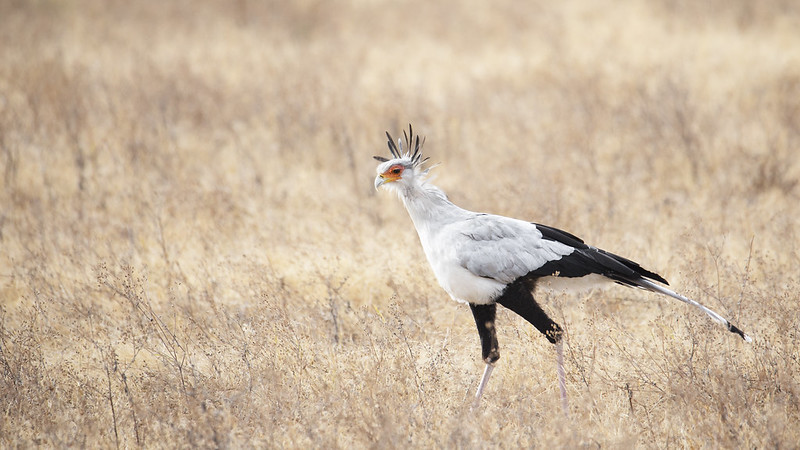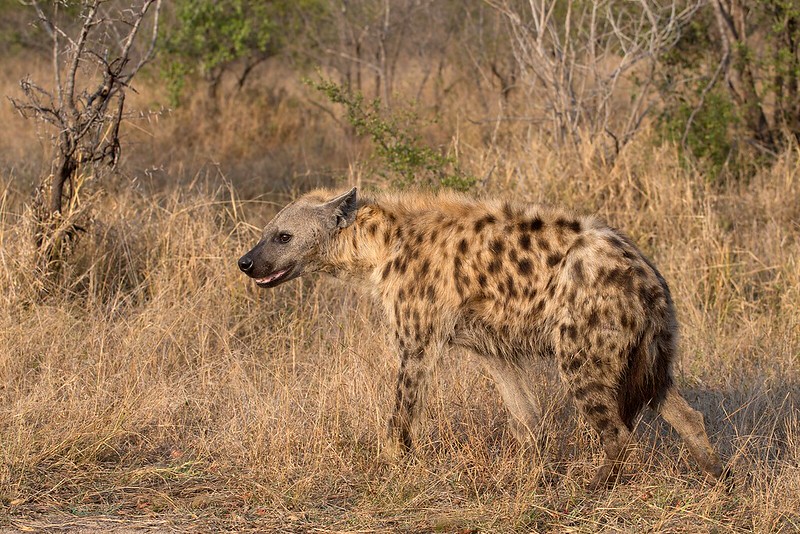5 Fascinating Facts About the Secretary Bird (Sagitarius Serpentarius) One of the strangest birds in…
Visiting Sossusvlei: A Guide to the Sand Dunes of Namibia
Visiting Sossusvlei: A Guide to the Sand Dunes of Namibia.
The world’s oldest desert is the Namib. It might be the most exquisite as well. The Sossusvlei sand dunes, located in the southern portion of this desert in what was once a little-known area of Namibia, are nearly flawless. Nestled between the gravel-faced Naukluft Mountains and the untamed Skeleton Coast are these dunes.
Sharp sand ridges have been sculpted by the wind here for ages, creating flawless arcs that rise from valley floors to heights of more than 300 meters (984 feet). Every dune is unique and is continually changing due to wind. Beyond the distant horizon lies a world of moving sand dunes that appear to go on forever. It is the desert of our childhood fantasies.
1. Sesriem
The remote desert hamlet of Sesriem, the entry point to Sossusvlei, is named after the neighboring Sesriem Canyon. It takes a lengthy, lonely drive across a frequently deserted terrain to get here. Sesriem is roughly 345 km/215 mi southeast of Swakopmund and 360 km/220 mi southwest of Windhoek, the capital of Namibia. The settlement itself is a little lackluster. The gas station and the park headquarters for Namib-Naukluft National Park, which is home to the dunes, are its two main hubs.
You can get your entry permit and pay your park fees at the park office. Although there aren’t many lodging options in Sesriem, there are plenty of options spread out over miles. These are frequently located distant from the actual settlement. The best offer breathtaking views of the Sossusvlei dunes, which rise southwest of Sesriem like ramparts.
2. The Sossusvlei
Most likely, Sossusvlei comes to mind when you think of Namibia’s sand dunes. At the park gate, lines start to form long before sunrise. Your car information will be captured as you enter the park so you can take advantage of the morning light, but you won’t be charged until you depart later in the day.
The dry Tsauchab River runs parallel to the road leading into the dunes, which is a narrowing stretch of table-flat sand with sand dunes rising on either side. At dawn light, keep an eye out for brown hyenas darting out into the hills. A 5km/3mi detour is needed to reach Elim Dune at the northern end of the valley. This dune has the ideal crest for sunset viewing, therefore come here later in the day.
Off the paved road farther in, side roads lead to the bottom of the dunes, one after the other, where they are ready to be climbed. One of the more well-known is Dune 45, which gets its name from the fact that it is 45 km/28 mi from the Sesriem entrance.
Once more heading west, shuttle services that travel deeper into the dunes to the west begin at the 2WD parking lot. The hike to Hidden Vlei begins at the parking lot. Marked by white poles, this 4km/2.5mi return journey over the sands leads you into a hauntingly empty bowl encircled by some of the tallest dunes in Sossusvlei. When you return to the main valley or pan after arriving at the 4WD parking lot, dunes swarm in all directions.
3. The Deadvlei
Deadvlei is the spot for you if you were drawn here by pictures of skeleton trees that are charcoal-black on a bed of sand, all traces of life dwarfed by golden mountains. This is one of the iconic photos of southern Africa and the quintessential sight of Namibia’s sand dunes. The scene is horrific at lunchtime. In the glare of the desert sun, the white-hot sand appears to be overexposed in this shot. In a terrifyingly powerful desolation, the silhouetted trees stand like terrified echoes of life.
The warmth of the golden sands and the relief of lengthening shadows, in stark contrast, add depth and an entirely new dimension to the experience in the early morning or late afternoon. Big Daddy Dune, the tallest of the Sossusvlei dunes at 325 meters/1,066 feet, is located at Deadvlei. The 4WD parking lot marks the start of the sandy trail to Deadvlei. The walk back is 2 miles and 3 km.
![]()
4. Canyon of Sesriem
The expansive horizons and shifting sands of the dunes elsewhere in the region are complemented by Sesriem Canyon, which is located off a side road between Sesriem town and Sossusvlei. The canyon’s steep cliffs, which are nearly invisible until you are on the edge, are interspersed by deep, narrow pathways. Sesriem Canyon features a narrow network of trails, isolated water pools, and odd rock formations.
The walls seem to close in, making the experience claustrophobic at moments. At times, it seems personal, a hidden realm of darkness and shade tucked away in the middle of a desert that extends for hundreds of kilometers in most directions. Sand and gravel have combined and cemented over millions of years to build the canyon. This place has a sense of permanence that stands in stark contrast to the dunes’ shifting sands.
When to Leave
July through November is considered high season, during which time lodging prices are at their highest and tourists are at their most concentrated. Although temperatures can get quite hot starting in October, this is also when desert temperatures are at their mildest.
May and June are strong choices outside of this. The weather has started to cool off, and lodging costs at several lodges and tented camps have decreased. Expect extremely high temperatures for the remainder of the year, which will significantly reduce the amount of time you may spend in the dunes.
Times of Opening
Sesriem’s national park gate opens at dawn and closes at dusk. The only option to enter before then is to stay inside the park’s boundaries at the upscale Sossus Dune Lodge or Sesriem Campsite. If you want to capture the greatest morning or afternoon light, these are your best bets. However, as it is illegal to drive within the park before sunrise or after dusk, the benefit is little.
Sleeping inside the park only spares you from the line at the gate, which during peak hours can consist of dozens of cars. For a good position in the line, arrive around an hour before sunrise. Make sure you return to the gate before the sun sets if you are not staying in the park.
Organizing Your Trip
You can arrange your trip to Sossusvlei in a variety of ways. We advise you to travel as quickly as the speed restrictions and required morning picture stops permit to reach your farthest destination (such as the 4WD parking lot).
This will increase the likelihood that locations like Deadvlei will have favorable photographic lighting. When you return, aim to get at the gate or a location similar to Elim Dune a few hours before dusk. Instead of losing some of the best light traveling back from farther down the river, you can take in the views that are close by.


